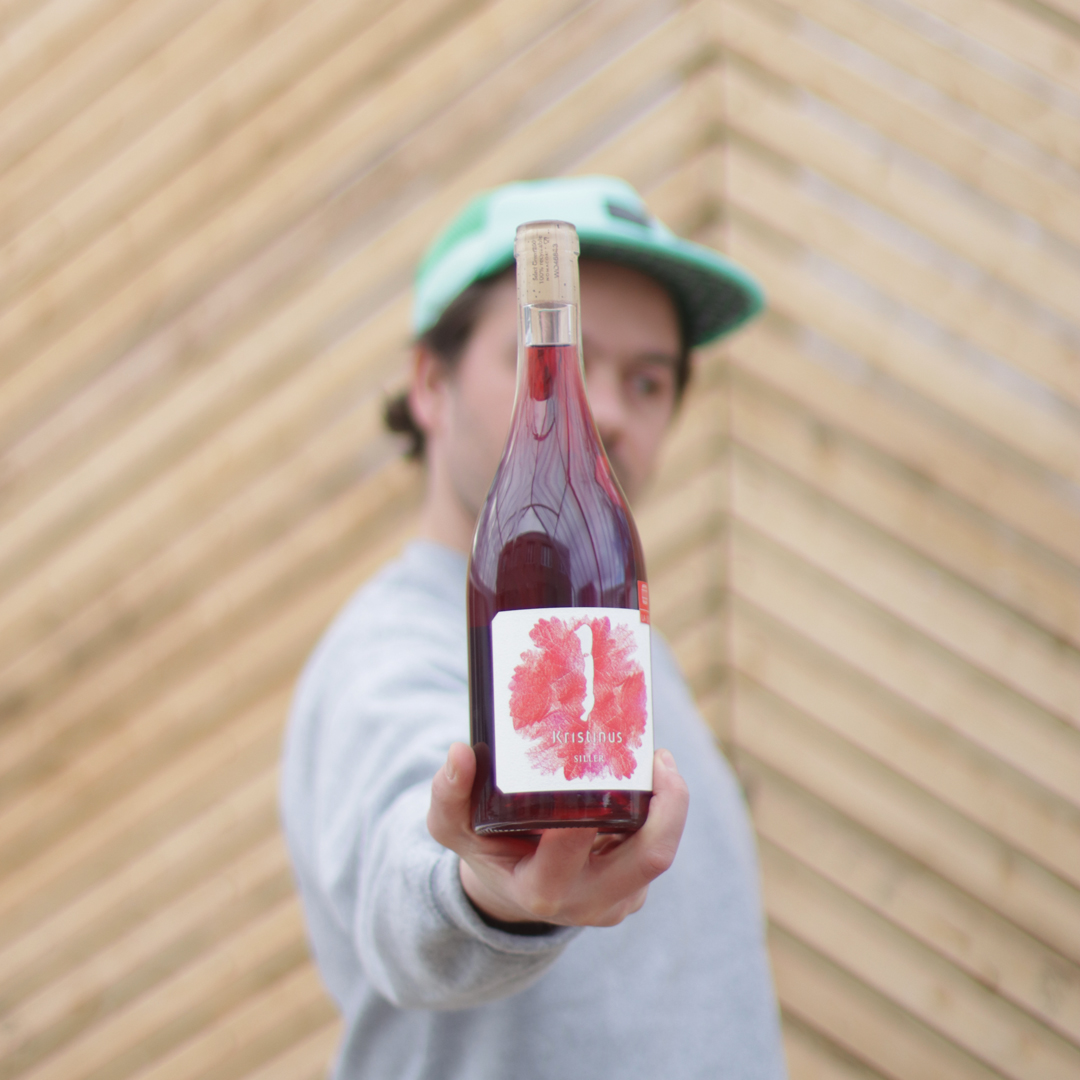Do you know Zweigelt grape?
Zweigelt is the most widely planted black grape of Austria with more than 6500 hectares, and the 2nd largest Zweigelt grower country is Hungary with more than 2400 hectares. Due to the Nazi past of the breeder, it was suggested to change to name to Blue Monday. Zweigelt is also grown in Japan! Zweigelt is known as a fruity, easy drinking red wine for early consumption, but there are examples, especially when yield is kept low. If you want to taste Hungarian Zweigelt, head for Sopron!
Taschner Zweigelt, Sopron
Sopron is the most important Zweigelt region in Hungary, and Kurt Taschner, owner of the winery pays special attention to local varieties. His Zweigelt is made in a traditional way: fermented in an open vat, aged in wooden barrel, therefore his Zweigelt is more complex than the usual Hungarian wines of the grape. Dried red fruits, firm tannins, ideal with duck or goose.
Taschner wines are available all over Hungary and it is also exported to some countries, but if you have the chance to travel to Hungary, the beautiful town of Sopron is really worth a visit. The „City of Faith” with its cobblestoned streets, lovely, rustic wine bars and great restaurants is one of the most visited tourist destinations of Hungary.
More about Taschner
Etyeki Kúria, Sopron
Though Etyeki Kúria is a winery located in Etyek, near Budapest, and its headquarter is an amazing visitor centre and conference venue as well, the winery has vineyards in Sopron wine region, and the wines made of grapes harvested in Sopron have already achieved several acknowledgements. Some Zweigelt (5%) is used for the winery’s entry level red wine called Kúria Red, but they also make a single varietal Zweigelt. The manually picked grapes are fermented on the skins with manual punching down. Matured for one year; 70% in 2-3 year-old, 30% in new Hungarian oak barrels (300 liters). “On the nose intensively juicy, with notes of blackcurrant, blackberry and hints of clove. On the palate notes of blackcurrant juice, clove and licorice in the finish, the tannins are very vivid, playful spiciness.”
More about Etyeki Kúria and Zweigelt
Nazi breeder or Blue Monday?
It is a truly Austrian grape variety crossed in 1922 by Fritz Zweigelt in Klosterneobourg, Austria. It was not him who gave the name to the variety made by crossing Blaufrankisch and Saint-Laurent, he called the new grape Rotburger. The name was given later, in honour of the breeder. Zweigelt was born in 1888 in Hitzendorf near Graz, he was educated there, and in 1911 received a PhD in natural sciences from the University of Graz. The following year he started work at the Federal Institute for Viticulture and Pomology at Klosterneuburg, Austria and in 1938 became its director. His fortunes were closely tied to that of the Nazis in Austria (he was a member of the Nazi party), and his career ended in 1945. The Nazi connection comes up from time to time regarding the grape, for example last year, when a group of artists launched a campaign for the Zweigelt grape variety to have its name changed from that of the Nazi party member who created it. The group of artists stated “No other sector in Austria which was implicated in the Nazi system of terror has stayed as silent as the wine industry.” Growers and restaurants were taking note, with wineries and a Vienna restaurant pledging to market the wine under the name “Blue Monday”, an allusion to what one might experience after a weekend enjoying too much of the wine.
Zweigelt is also grown in the Czech Republic and Slovakia, and – strange enough – in Canada, Belgium, Poland and even in Japan (with more than 200 hectares!). In Hungary Zweigelt is certainly the most planted in Sopron wine region, bordered with Austria, but it is also found in Villány, Szekszárd, Eger, Mátra, even in the lesser known Csongrád wine region.
Comments ( 20 )
-
Trackback: Golden Teacher Mushrooms – 4 Oz,
-
Trackback: ทดลองเล่นบาคาร่า
-
Trackback: click the next web site
-
Trackback: gordijnen dubbele plooi
-
Trackback: golden teacher mushroom
-
Trackback: VMC Zlurpee
-
Trackback: สล็อตเว็ปตรง
-
Trackback: 웹툰 다시보기
-
Trackback: ทำไมต้องเลือก บอลสูงครึ่งแรก ดียังไง ?
-
Trackback: Bilad Alrafidain
-
Trackback: edibles toronto
-
Trackback: ของพรีเมี่ยม
-
Trackback: วิเคราะห์บอลวันนี้
-
Trackback: gold rim chairs
-
Trackback: ตกแต่งภายในหาดใหญ่
-
Trackback: สล็อต pg เว็บตรงแตกหนัก 2024
-
Trackback: สล็อตเว็บตรง
-
Trackback: apex legends cheats
Comments are closed.







Trackback: bbw smother